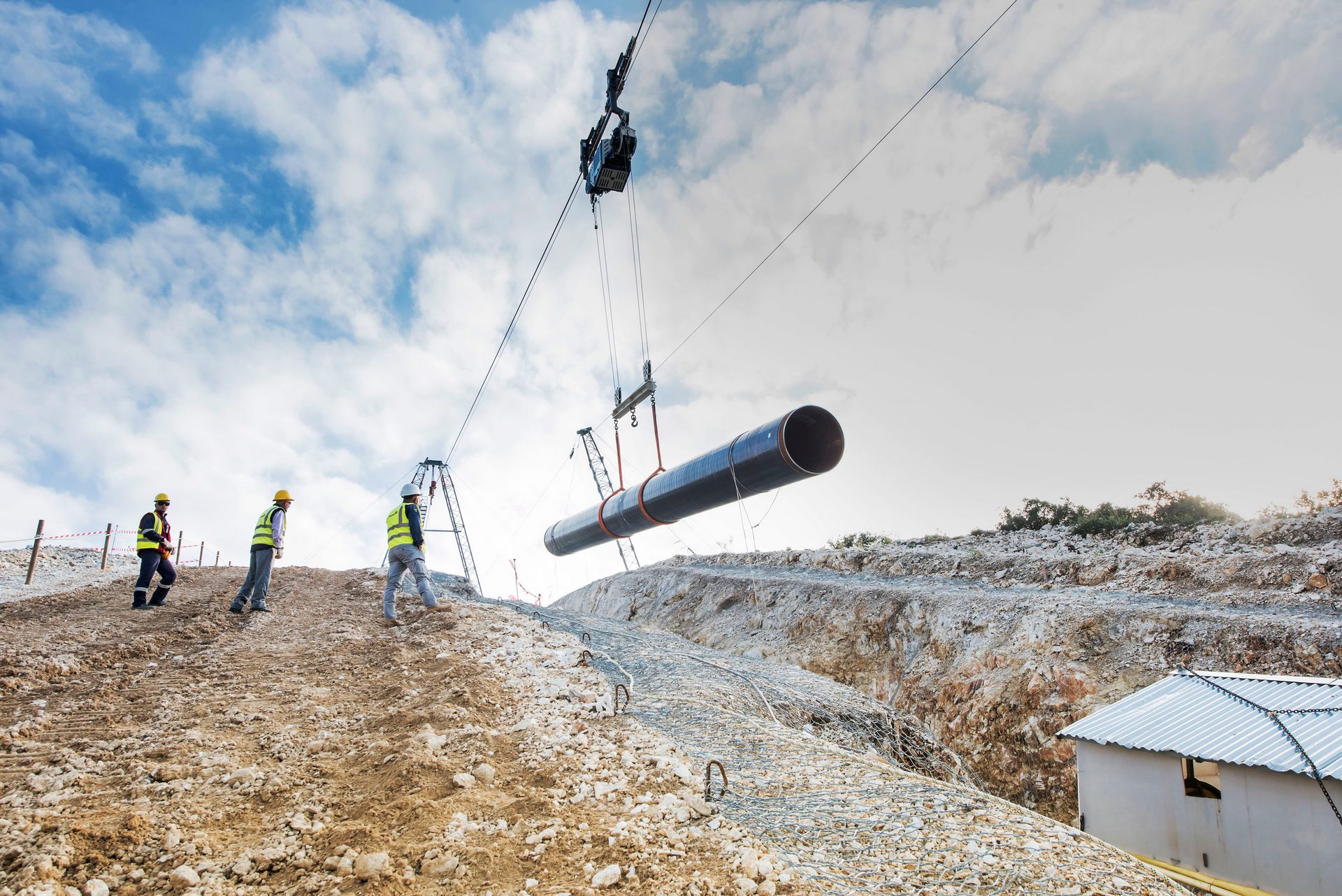The use of our cable crane systems allows transportation along direct routes. The system is assembled exactly above the planned route of the pipeline. Thereby, the ropeway effortlessly overcomes steep terrain, rocky ground or inaccessible areas. At the same time, it enables a narrow ROW. Over a length of 3,000 m, the system can precisely load and unload materials of up to 30 to at any point along the route.
Cable crane systems are extremely flexible. Professionally planned and thoughtfully designed, they adapt ideally to the environment. Thus, they not only follow the given terrain, but also horizontal bends in the route of the pipeline. The use of high-tech and high-quality machinery and materials makes the system independent of climatic conditions. This significantly extends the operating time – especially in case it is necessary to work during winter months or rainy seasons.
In order to meet various technical challenges and the given environmental, safety and equipment requirements, a coherent overall concept is necessary. Furthermore, to ensure that the high quality standards of pipeline construction are met, a good coordination of all processes required for the construction is important.
The success of the project is the benchmark of our work. Therefore, we start with carrying out an exact analysis of the route, the initial situation and the local conditions. Subsequently, together with our customer, we develop a precise plan for the construction of the pipeline or – depending on the project – for the transport in inaccessible terrain.
We dispose of experience, know-how and the equipment to ensure comprehensive safety standards. With our systems, we are able to keep the impact on the environment as low as possible. In addition, our systems contribute to reduce construction costs while guaranteeing high-quality results.

